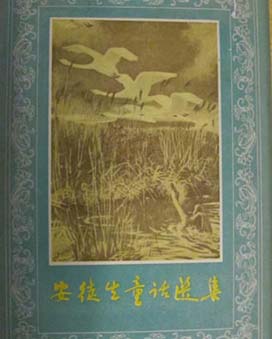Getting behind the stories
Updated: 2012-07-16 14:56
By Xu Junqian (China Daily)
|
|||||||||||
 |
|
An early translation of The Wild Swans. Provided to China Daily |
 |
|
Sun Jian, professor of Nordic literature at Fudan University, with a fish-tailed visitor to Shanghai in 2010. Provided to China Daily |
Bright sunshine pours through the classroom windows and over the chairs where students sit in twos and threes. They are reading about Karen, the vain girl who eventually abandons her red shoes in one of Hans Christian Andersen's most famous fairy tales.
It's a likely scene at any primary school, where Chinese students have studied Andersen stories like The Red Shoes for decades. But these students regroup every Tuesday morning in a spacious classroom to study the stories at Shanghai Fudan University.
"We kicked off this course, Nordic Literature, as a kind of trial a couple of years ago," says Sun Jian, professor of the course and director of the Nordic Literature Research Institute at Fudan. "But overwhelming feedback and student demand have made it a regular choice on the curriculum."
It's no surprise that Andersen's fairy tales have been a major part of the course, about one-third of curriculum, Sun adds. The Ugly Duckling, The Little Mermaid, The Little Match Girl, and The Emperor's New Clothes are the most popular Andersen stories in China, appearing in text books as late as high school.
Sun meets about 50 students in this decade-old red-tiled school building. Coming from majors including computer science and business management, they come here to immerse themselves in a legendary storyteller's wild imagination.
An ugly duckling is transformed into a swan. A pair of red shoes bears a curse. The love of a little mermaid is unrewarded - the most popular story in the classroom.
"Most of the students are girls. As they are more emotionally sensitive and subtle, it's always a pleasure to listen to their interpretation of works like The Little Mermaid and The Ugly Duckling from perspectives like feminism and cross-culture study," says Sun.
"And students always tell me how different it is to read these fairy tales after they have grown up," he adds.
Guo Xiaohan, a former cultural and lifestyle journalist in Beijing and now a published author, believes fairy tales were not meant for kids from the start - at least not only for them.
Guo has just published her own fairy-tale book, Little Love, featuring stories of television and abandoned Converse sneakers, dedicated to her own child and millions of other kids growing up in today's "concrete forest".
"While parents would love to see their kids morally and literally educated through those 'good-will-be-rewarded-with-good' tales, authors like Andersen were simply expressing their innocence through a more childlike way," says Guo.
"And grown-up readers of these tales are, like the author, re-appreciating the world through the eyes of a kid," she added.
As adults, Sun says, students can appreciate the serious implications of the original texts, versus the happily-ever-after Disney versions.
Founded in 2007, the Nordic Literature Research Institute of Fudan University is the first and best-known organization focusing on that region's literature study in China. Sun's program is affiliated with the University of Southern Denmark in Odense, Andersen's hometown, and Sun will travel there this fall to explore further cooperation between the institutions.
Contact the writer at xujunqian@chinadaily.com.cn.
Related Stories
Mike Stilkey's book art 2012-07-12 10:57
Book celebrates tennis at Olympics 2012-07-10 10:09
Children perform fairy tale drama in Beijing 2012-07-06 15:07
Books to connect cultures 2012-07-04 14:02
Today's Top News
Rescuers race against time for quake victims
Telecom workers restore links
Coal mine blast kills 18 in Jilin
Intl scholarship puts China on the map
More bird flu patients discharged
Gold loses sheen, but still a safe bet
US 'turns blind eye to human rights'
Telecom workers restore links
Hot Topics
Lunar probe , China growth forecasts, Emission rules get tougher, China seen through 'colored lens', International board,
Editor's Picks

|

|

|

|

|

|





